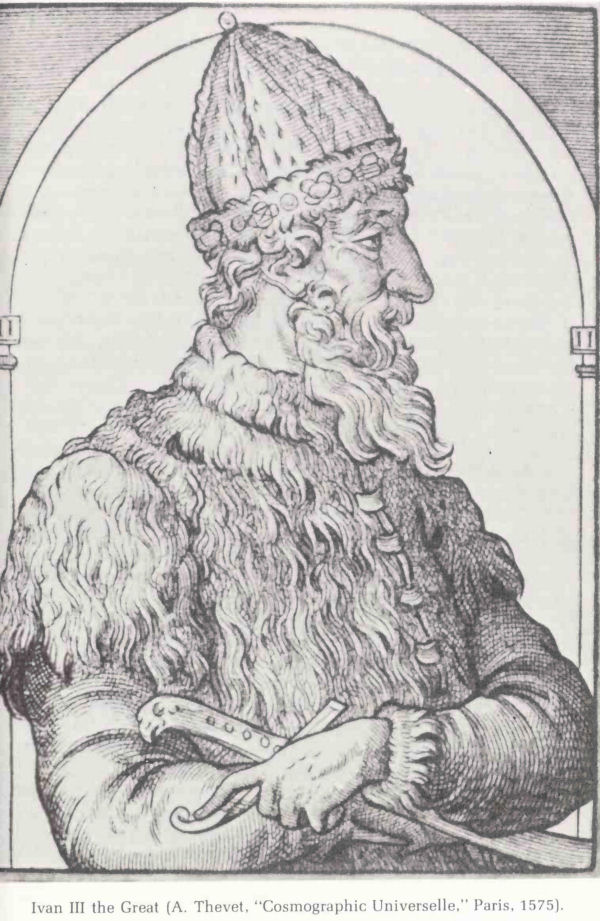Illustrations
1. Scene from the reliefs of the Battle of Kadesh. 13
2. The Sestertius of Nerva, bearing the inscription “VEHICVLATIONE ITALIAE REMISSA.” 95
(a) Air view of a part of the cursus publicus in Syria.
(b) Ground view of the cursus publicus, showing its massive construction.
5. Fortifications of the Roman limes; relief from the Column of Marcus Aurelius. 115
6. Observation tower on the Roman limes, with a torch for night signalling; relief from the Column of Trajan. 116
[[ Pages 115-116 missing ]]
8. Model of a dromon, a warship of the Byzantine Imperial navy. 155
9. The Byzantine Imperial navy destroys the fleet of the insurgent Thomas with Greek fire. 156
10. Conquest of Berrhoia in Syria by Nicephorus Phocas in 963. 163
12. The Omayyad Mosque in Damascus, showing decorative mosaics executed by Byzantine artists. 198
13. The Citadel of Cairo, center of government for Saladin and the Mamluks. 229
xii
14. The insurgent Thomas makes an alliance with the Arabs (ca. 820). 237
15. The Byzantine army defends Europos against the Emir of Tarsus. 238
17. Asia Minor as shown in the Arab map of al-Idrisi. 257
18. The enthronement of Jenghiz Khan. 263
19. A Mongol cavalry pursuit. 273
Scene from the reliefs of the Battle of Kadesh (J. H. Breasted, A History of Egypt).
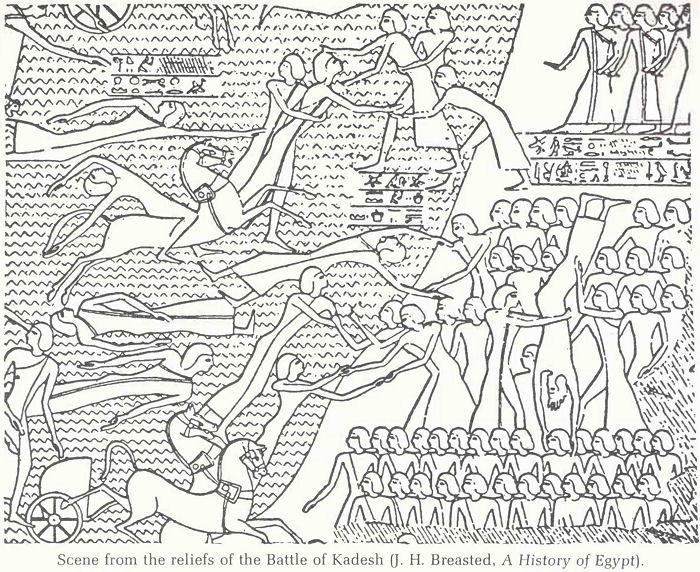
The Sestertius of Nerva, bearing the inscription “VEHICVLATIONE ITALIAE REMISSA” (actual size). Obverse: Head of the Emperor Nerva. Reverse: Mules grazing before a carriage, with the above inscription. Courtesy American Numismatic Society.
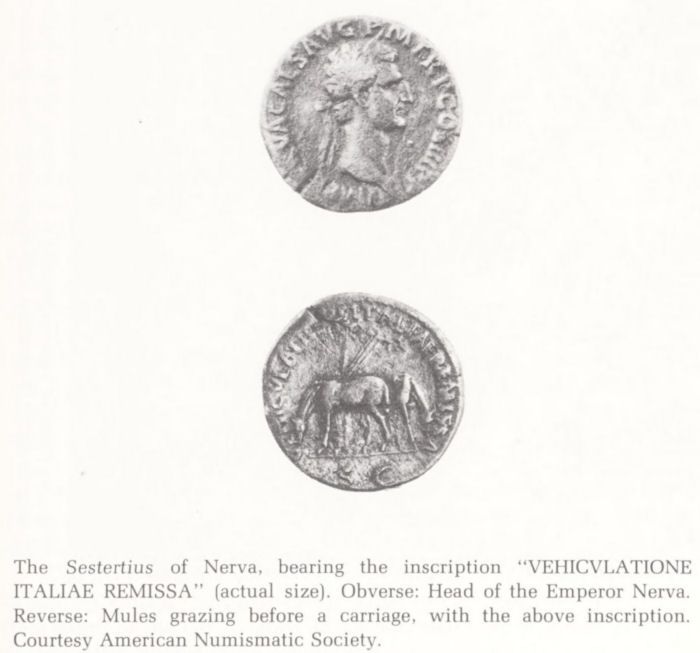
Rheda (or Raeda, a travelling carriage or wagon) passing a milestone on the cursus publicus; relief from Igel, near Trier (U. Kahrstedt, Kulturgeschichte der römischen Kaiserzeit).
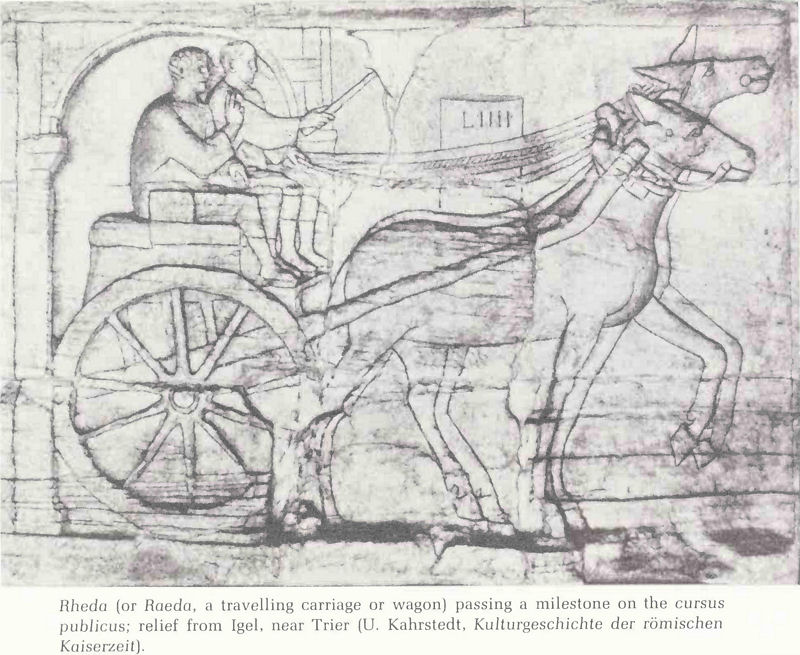
(a) Air view of a part of the cursus publicus in Syria.
(b) Ground view of the cursus publicus, showing its massive construction (U. Kahrstedt, Kulturgeschichte der römischen Kaiserzeit.)
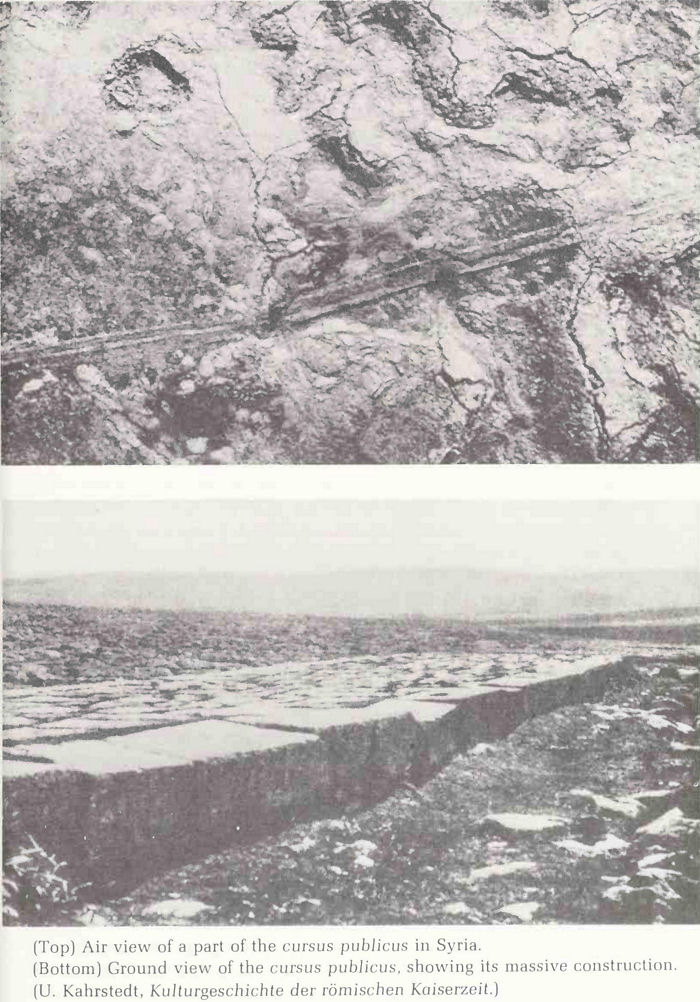
The cursus publicus in Constantinople, western Asia Minor, and North Africa, as depicted in Segment IX of the Tabula Peutingeriana, a 12th-century copy of an original Roman Imperial map (K. Miller, Die Peutingersche Tafel oder Weltkarte des Cassorius).
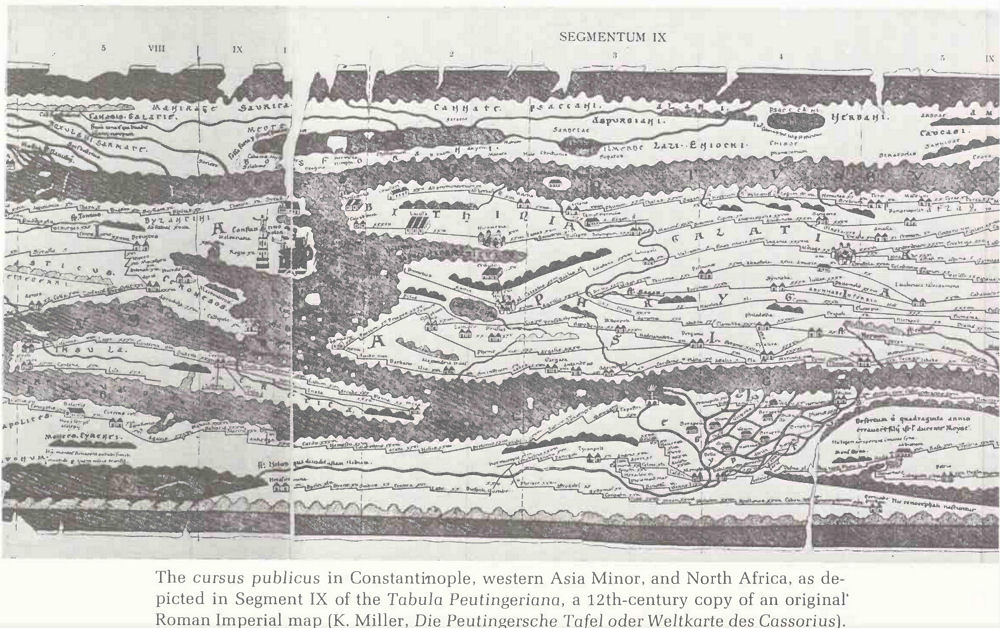
Fortifications of the Roman limes; relief from the Column of Marcus Aurelius
Observation tower on the Roman limes, with a torch for night signalling; relief from the Column of Trajan
[[ Pages 115-116 missing ]]
Basil, one of the conspirators of the Zautzes family, explains their plot to Samonas, while, to their right, two spies of the Emperor Leo VI eavesdrop and take notes (Skyllitzes Matritensis, fol. 110a).
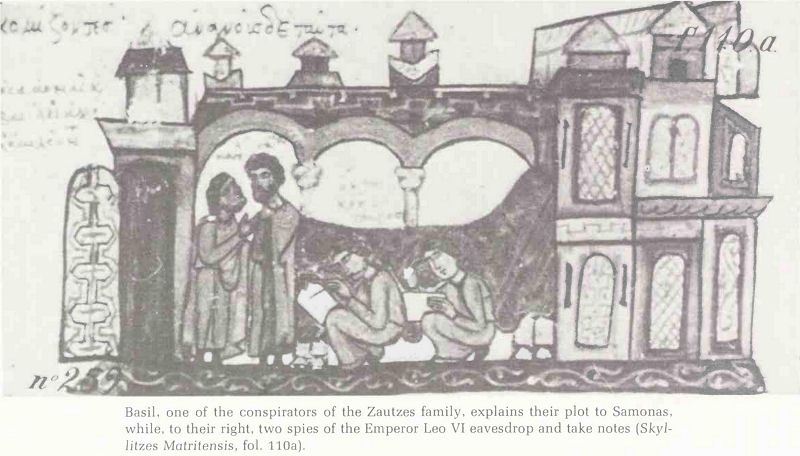
Model of a dromon, a warship of the Byzantine Imperial navy (R. H. Dolley, “The Warships of the Later Roman Empire,” The Journal of Roman Studies, 38).
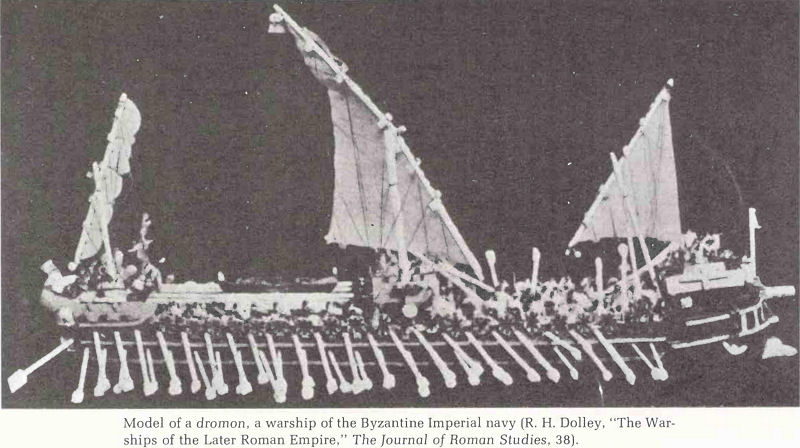
The Byzantine Imperial navy destroys the fleet of the insurgent Thomas with Greek fire (Skyllitzes Matritensis, fol. 34v.b).
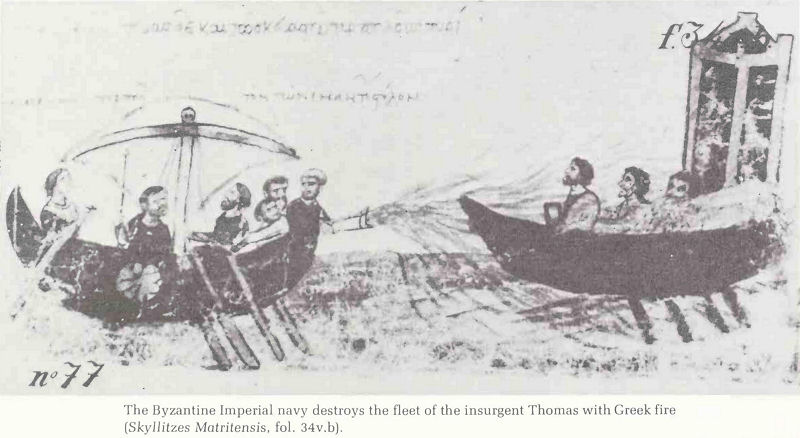
Conquest of Berrhoia in Syria by Nicephorus Phocas in 963 (Skyllitzes Matritensis, fol. 142a).
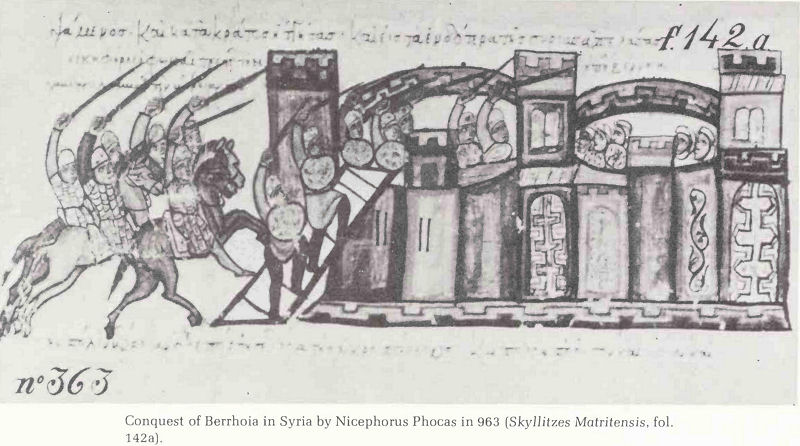
Nicephoras Phocas enters Constantinople in triumph in 963, hailed by the populace as he approaches Hagia Sophia (Skyllitzes Matritensis, fol. 145b).
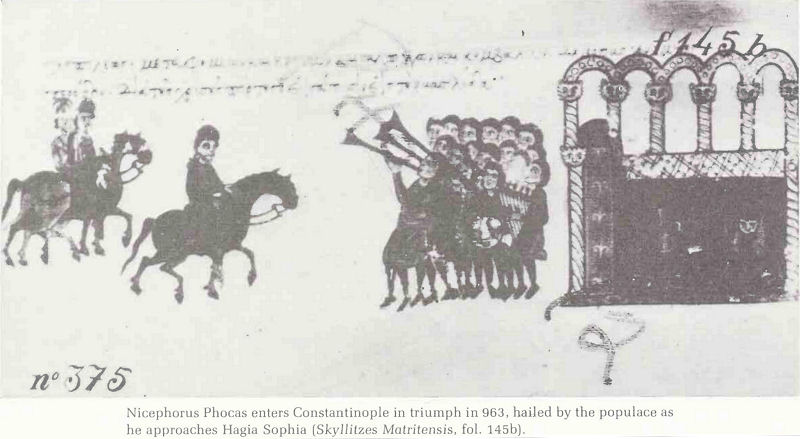
The Omayyad Mosque in Damascus, showing decorative mosaics executed hy Byzantine artists. Photo courtesy of Cyril Mango.
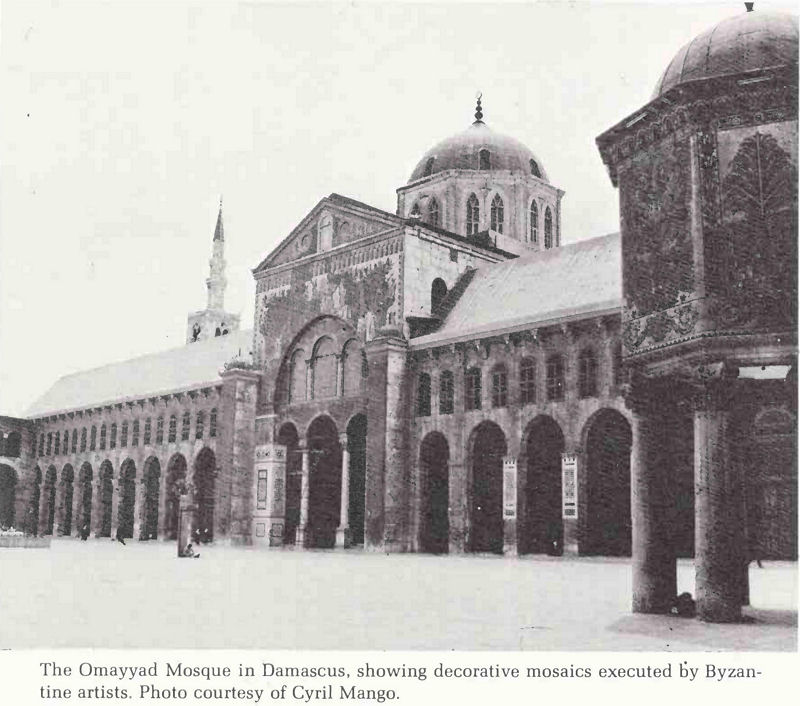
The Citadel of Cairo, center of Government for Saladin and the Mamluks (K. A. C. Creswell, Fortifications in Islam before 1250).
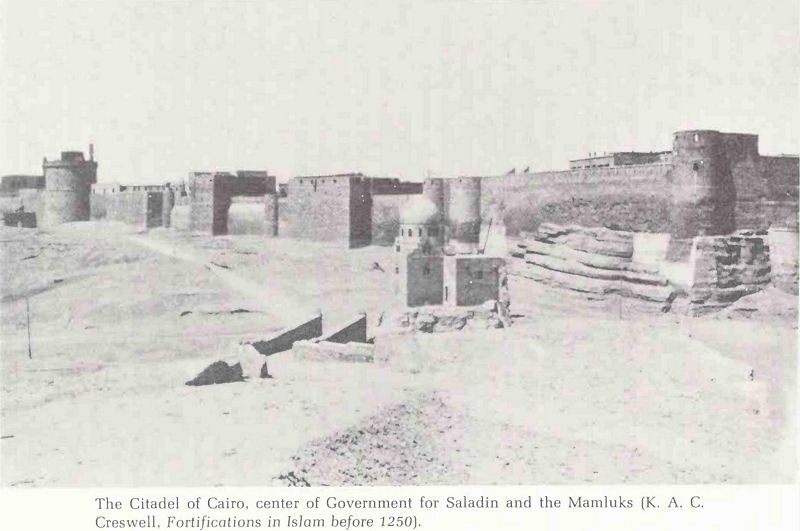
The insurgent Thomas makes an alliance with the Arabs (ca. 820) (Skyllitzes Matritensis, fol. 31a).
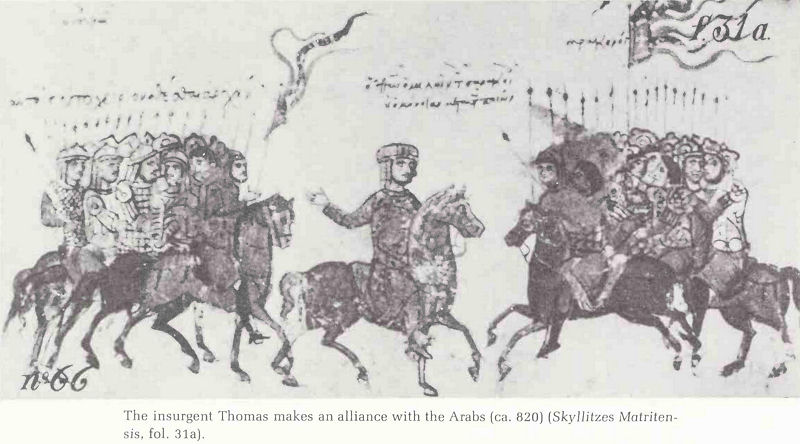
The Byzantine army defends Europos against the Emir of Tarsus (Skyllitzes Matritensis, fol. 97v).
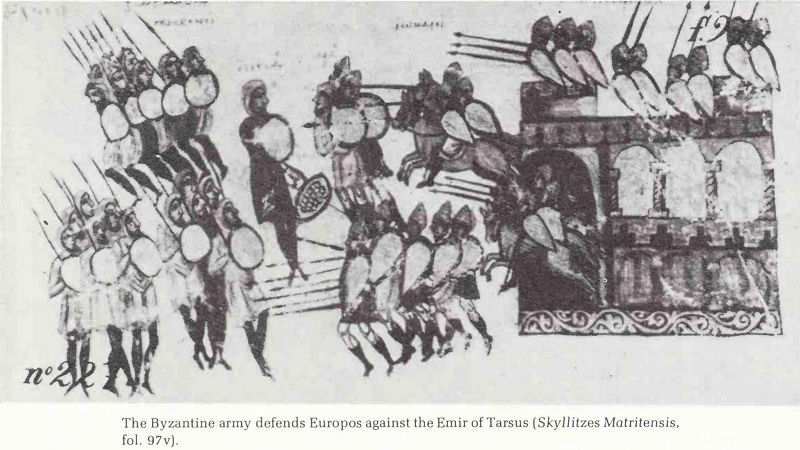
The cursus publicus in eastern Asia Minor and Syria, as depicted in Segment X of the Tabula Peutingeriana, a 12th-century copy of an original Roman Imperial map (K. Miller, Die Peutingersche Tafel oder Weltkarte des Cassorius).
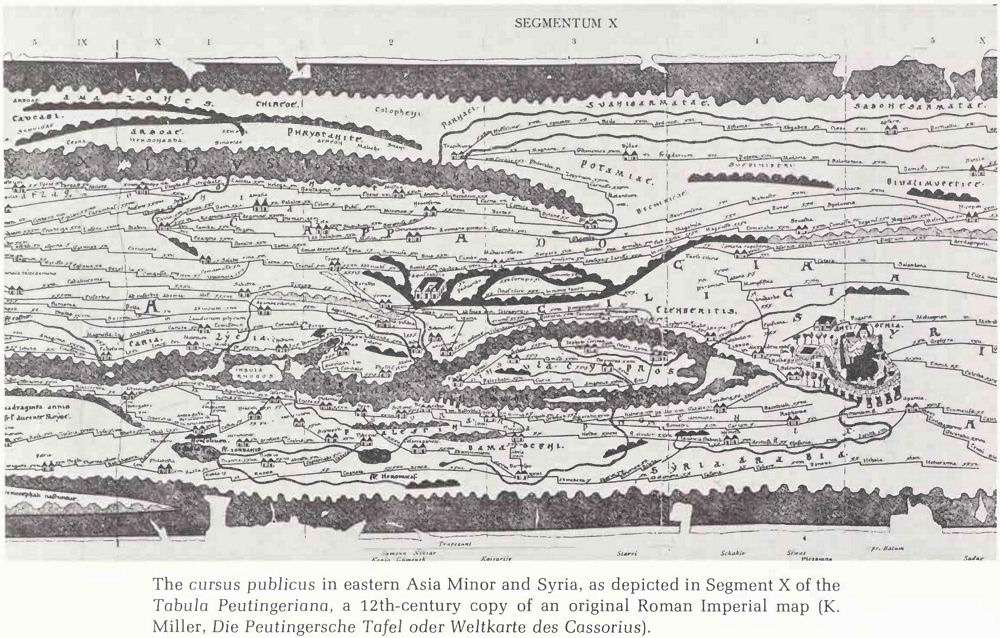
Asia Minor as shown in the Arab map of al-Idrisi. Note that the Black Sea is at the bottom, and the Mediterranean Sea at the top (Mappae Arabicae).
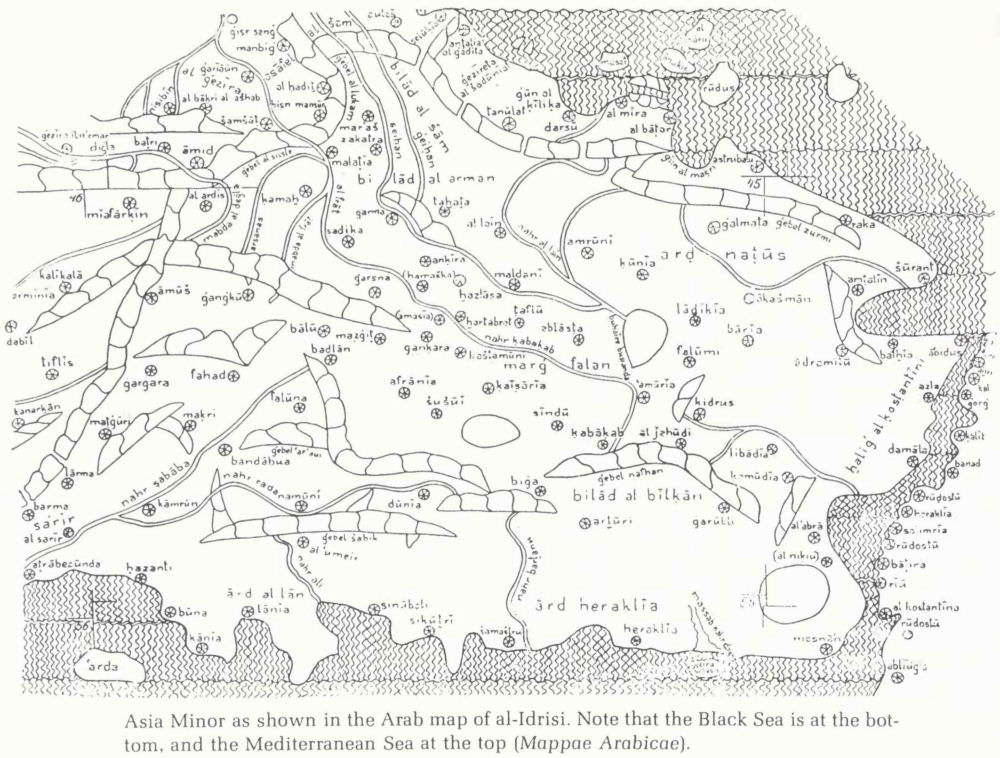
The enthronement of Jenghiz Khan (MS Suppl. Persan 1113, fol. 44v). Courtesy Bibliothèque Nationale, Paris.
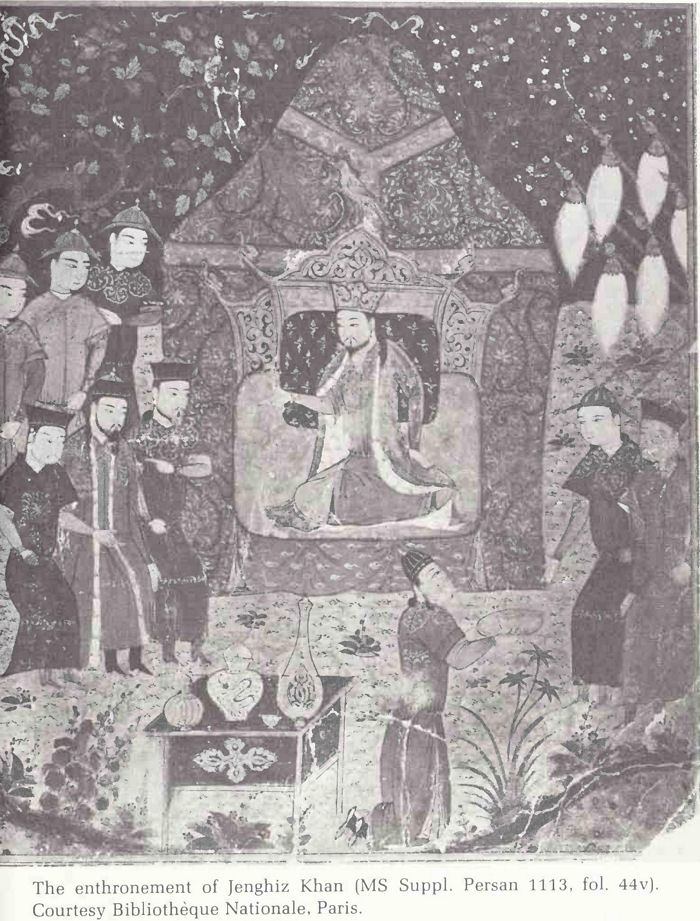
A Mongol cavalry pursuit (MS Jami-et Tawarikh, 1314, Hazine 1653, p. 165b). Courtesy Topkapu Saray Museum, Istanbul.
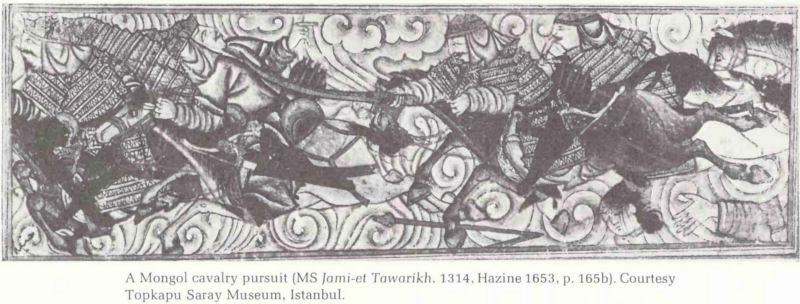
Ivan III the Great (A. Thevet, “Cosmographie Universelle,“ Paris, 1575).
